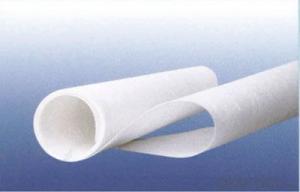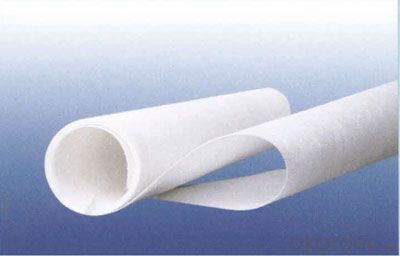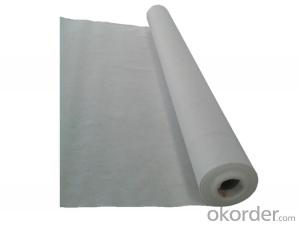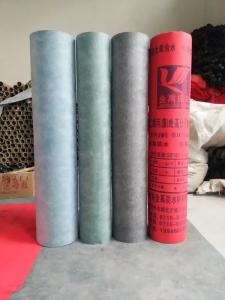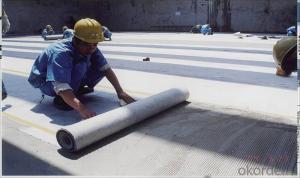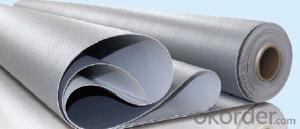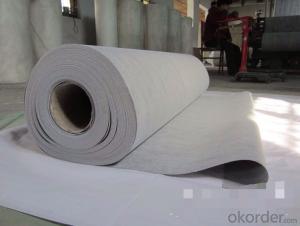Polyethylene Polypropylene Waterproofing Membrane
- Loading Port:
- China main port
- Payment Terms:
- TT OR LC
- Min Order Qty:
- 5000 g/m²
- Supply Capability:
- 100000 g/m²/month
OKorder Service Pledge
OKorder Financial Service
You Might Also Like
1.Structure of Polyethylene Waterproofing Membrane Description:
Polyethylene waterproofing membrane belongs to polymer waterproofing materials series.Besides completely with all the advantages of the synthesis of polymer coil, its most prominent characteristic is the surface mesh structure, making its have the use of their own unique performance, cement bonding.Due to that the high polymer compound coil can be directly in the process of solidification with cement material of adhesive, so can design in the structure of the cement materials directly. The surface is polypropylene non-woven fabrics, through with the composite core layer, solves the large polyethylene linear expansion coefficient and increases the roughness on the surface of the product.And also it improve the product friction coefficient and compound coil bonding problem is resolved, cement bonding realizing.
2.Main Features of the Polyethylene Waterproofing Membrane:
•Anti-aging, anti-oxidation, corrosion resistance
•Non-toxic,tasteless, no pullution
•Firm adhesion, no empty drum, no falling off
•Strong tensile strength, penetration resistance
•Convenient for construction in winter
3.Polyethylene Waterproofing Membrane Specification:
| Name | Thickness(mm) | Width(m) | Length(m) | Weight(g) |
| Polyethylene Waterproofing Membrane | 0.5mm-2mm | 1.0-1.2 | 500-1000m | 200-1200 |
4.Polyethylene Waterproofing Membrane Images:
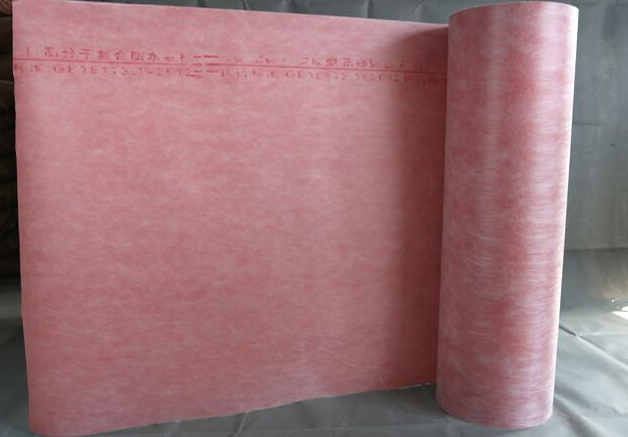
- Q: Can a waterproofing membrane be applied on curved surfaces?
- Yes, a waterproofing membrane can be applied on curved surfaces. In fact, waterproofing membranes are designed to be flexible and adaptable, making them suitable for application on various shapes and contours, including curved surfaces. These membranes are typically made from materials such as modified bitumen, polyurethane, or rubber, which have excellent elongation and flexibility properties. They can be easily molded and stretched to conform to curved surfaces without compromising their waterproofing capabilities. This allows for effective waterproofing of structures with curved components like roofs, balconies, tunnels, and tanks. Proper installation techniques and specialized tools may be required to ensure proper adherence and complete coverage on curved surfaces, but with the right expertise and materials, waterproofing membranes can be successfully applied on curved surfaces.
- Q: Can a waterproofing membrane be used for a shower pan?
- Using a waterproofing membrane for a shower pan is a great idea. In fact, it is highly recommended to guarantee the shower pan's durability and long-term functionality. The waterproofing membrane serves as a protective layer, preventing water from seeping through the shower pan and causing harm to the underlying structure. By applying the membrane on the shower pan, it forms a barrier that prevents water from penetrating, thus avoiding leaks and potential issues caused by moisture, such as mold and rot. Selecting a top-notch waterproofing membrane specifically designed for shower pans is crucial to ensure its effectiveness. Moreover, proper installation and adherence to the manufacturer's guidelines are essential to achieve a successful waterproofing solution for the shower pan.
- Q: Polyethylene polypropylene waterproofing membrane forming. Secondary molding, what does it mean? How to distinguish?
- In the appearance and mechanical analysis, these two processes is difficult to distinguish, a composite also has poor quality, the second compound can also be done better. So, only in the approval of the production line, to control.
- Q: What is the difference between SBS and APP rolls?
- Compared to the use of SBS waterproofing membrane to use a larger range. But each has its own advantages and disadvantages, according to the local environment and the actual situation of the building in combination with the characteristics of two kinds of coil to choose materials. You have to compare the next, I can only tell you SBS waterproofing membrane prices than APP waterproofing membrane high.
- Q: Can a waterproofing membrane be used in areas with high foot traffic?
- Areas with high foot traffic can indeed benefit from the use of a waterproofing membrane. These membranes are designed to safeguard against water and moisture, making them suitable for a range of environments, including those that experience heavy foot traffic. In fact, commercial buildings such as shopping malls, hospitals, and office complexes frequently utilize these membranes due to the constant flow of people. However, it is crucial to select the appropriate type of waterproofing membrane specifically designed for high foot traffic areas. Certain membranes possess enhanced durability and resistance to wear and tear, making them an excellent choice for such environments. Furthermore, proper installation and maintenance are essential to ensure the longevity and effectiveness of the membrane in areas with heavy foot traffic. It is also advisable to consider the unique requirements of the area and consult professionals or manufacturers to determine the most suitable waterproofing membrane for the given conditions. By carefully selecting and expertly installing the membrane, one can effectively shield areas with high foot traffic from water damage and ensure their longevity.
- Q: Can a waterproofing membrane be used on metal block surfaces?
- Metal block surfaces can indeed benefit from the use of a waterproofing membrane. These membranes are specifically designed to form a barrier against water and moisture, and they are versatile enough to be applied to various types of surfaces, including metal. By adhering to the metal surface, the membrane creates a protective layer that not only prevents water infiltration but also safeguards the metal against rust and corrosion. However, it is crucial to guarantee that the metal surface is thoroughly cleaned, dried, and appropriately prepared before the application of the waterproofing membrane. This preparation ensures optimal adhesion and effectiveness. For specific instructions on using a waterproofing membrane on metal block surfaces, it is highly recommended to consult a professional or refer to the manufacturer's guidelines.
- Q: Are waterproofing membranes suitable for historical buildings?
- Under certain circumstances, historical buildings can benefit from the use of waterproofing membranes. These membranes are specifically designed to safeguard structures against water damage, which is especially important for historical buildings that may have aged and porous materials. However, the suitability of waterproofing membranes for historical buildings relies on a variety of factors. First and foremost, it is vital to take into account the unique requirements and characteristics of the historical building in question. Each building possesses distinct materials and features, and the impact of waterproofing on these elements must be thoroughly assessed. Some older structures may possess delicate architectural elements or materials that could be adversely influenced by the application of waterproofing membranes. In such instances, alternative methods that are less intrusive or damaging may be more appropriate. Secondly, it is essential to seek guidance from conservation experts or professionals who specialize in the preservation of historical buildings. These experts can evaluate the specific needs of the building and offer advice on the most suitable waterproofing techniques. They can also ensure that any interventions are executed in a manner that respects the historical integrity and authenticity of the structure. Lastly, it is crucial to consider the long-term consequences of waterproofing membranes on historical buildings. While these membranes can effectively protect against water damage, they may also compromise the natural breathability of the building, potentially leading to moisture accumulation and further deterioration. Therefore, it is imperative to carefully balance the benefits of waterproofing with the potential risks and long-term effects. In conclusion, while waterproofing membranes can be appropriate for historical buildings, caution should be exercised when applying them. A thorough assessment of the building's specific requirements, consultation with preservation experts, and consideration of long-term implications are essential in determining the suitability of waterproofing membranes for historical structures.
- Q: Can a waterproofing membrane be used for swimming pool decks?
- Yes, a waterproofing membrane can be used for swimming pool decks. A waterproofing membrane is a protective barrier that prevents water from seeping into the underlying structure. It is commonly used in areas where water exposure is high, such as swimming pool decks, to ensure the longevity and durability of the structure. The membrane is typically applied over the concrete surface of the pool deck and provides a seamless, watertight seal. This helps to prevent water damage, such as cracking, spalling, or deterioration of the concrete, and minimizes the risk of leaks or water seepage into the surrounding areas. Additionally, a waterproofing membrane can also provide added benefits such as slip resistance, UV resistance, and protection against chemicals and stains. It is important to choose a high-quality waterproofing membrane that is specifically designed for swimming pool decks and can withstand frequent exposure to water and other environmental factors.
- Q: Can a waterproofing membrane be exposed to extreme temperatures?
- In general, waterproofing membranes can handle extreme temperatures without any issue. These membranes are designed to endure a wide range of temperatures, including both high and low extremes. However, it's crucial to understand that the temperature limits and performance features may differ based on the membrane's type and brand. To ensure the membrane is suitable for the specific temperature conditions it will face, it is always recommended to consult the manufacturer's specifications and guidelines. Moreover, factors like UV exposure and thermal expansion/contraction should also be taken into account as they can impact the overall performance and lifespan of the waterproofing membrane in extreme temperature conditions.
- Q: Can a waterproofing membrane be used for historical buildings?
- Yes, a waterproofing membrane can be used for historical buildings. However, it is important to consider the specific requirements and characteristics of the building. Some historical buildings may have unique architectural features or materials that need to be preserved, so it is crucial to choose a waterproofing membrane that is compatible with the building's structure and aesthetics. Additionally, consulting with preservation experts and following proper guidelines is essential to ensure the long-term protection and conservation of the historical building.
Send your message to us
Polyethylene Polypropylene Waterproofing Membrane
- Loading Port:
- China main port
- Payment Terms:
- TT OR LC
- Min Order Qty:
- 5000 g/m²
- Supply Capability:
- 100000 g/m²/month
OKorder Service Pledge
OKorder Financial Service
Similar products
Hot products
Hot Searches
Related keywords
